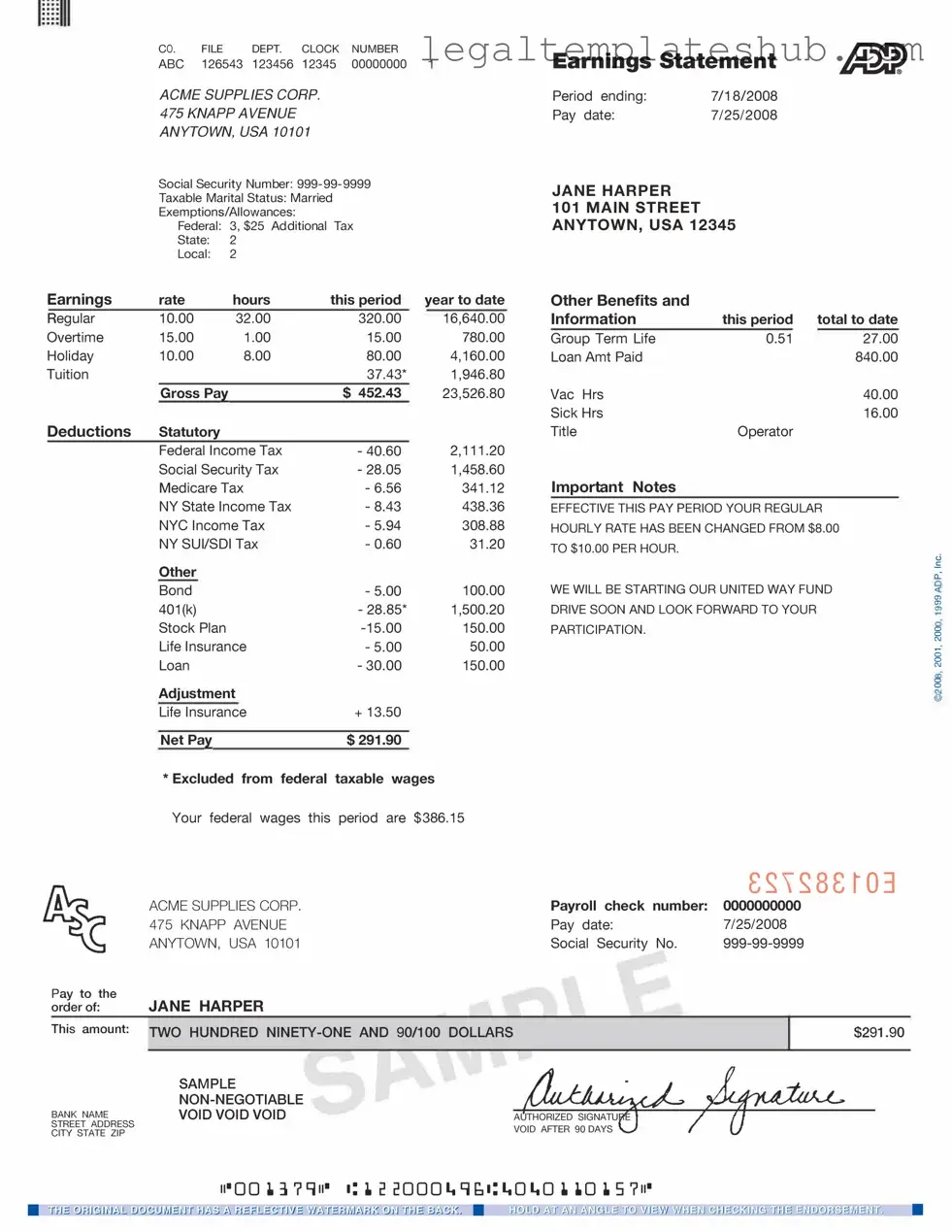Blank Adp Pay Stub PDF Form
The ADP Pay Stub form is a document that provides employees with a detailed breakdown of their earnings and deductions for a specific pay period. This form helps individuals understand their paycheck, including gross pay, taxes withheld, and any other deductions. For those looking to manage their finances effectively, filling out this form is essential; click the button below to get started.
Access Editor
